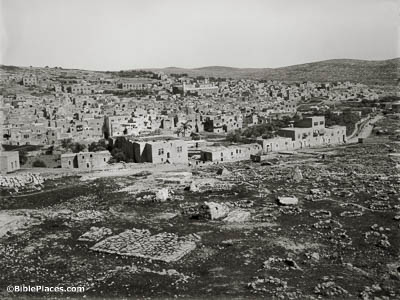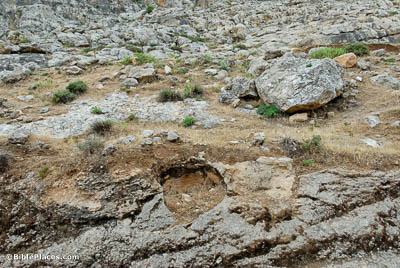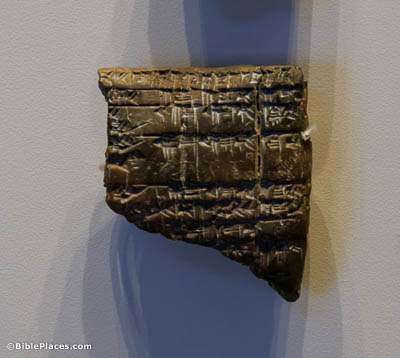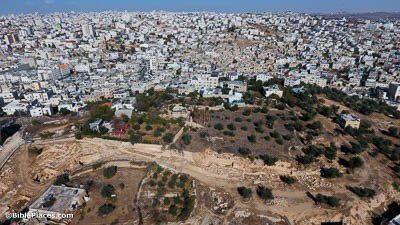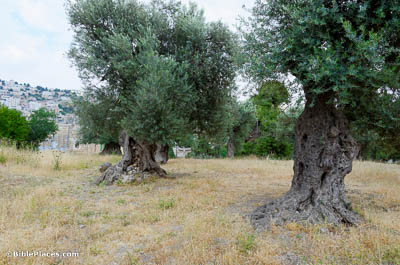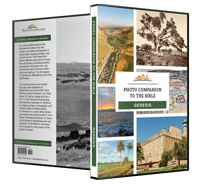Sarah died in Kiriath-arba (that is, Hebron) in the land of Canaan (Genesis 23:2).
Up to this point, Abraham has more commonly been associated with the nearby site of Mamre. The proximity of the two sites is noted repeatedly in Genesis (e.g., Gen 13:18; Gen 35:27). This photo was taken from the hill on which the ancient city of Hebron was built, now known as Tel Rumeida. The modern city now fills the gap between the two and covers a considerable around them. This American Colony photograph was taken between 1898 and 1914.
